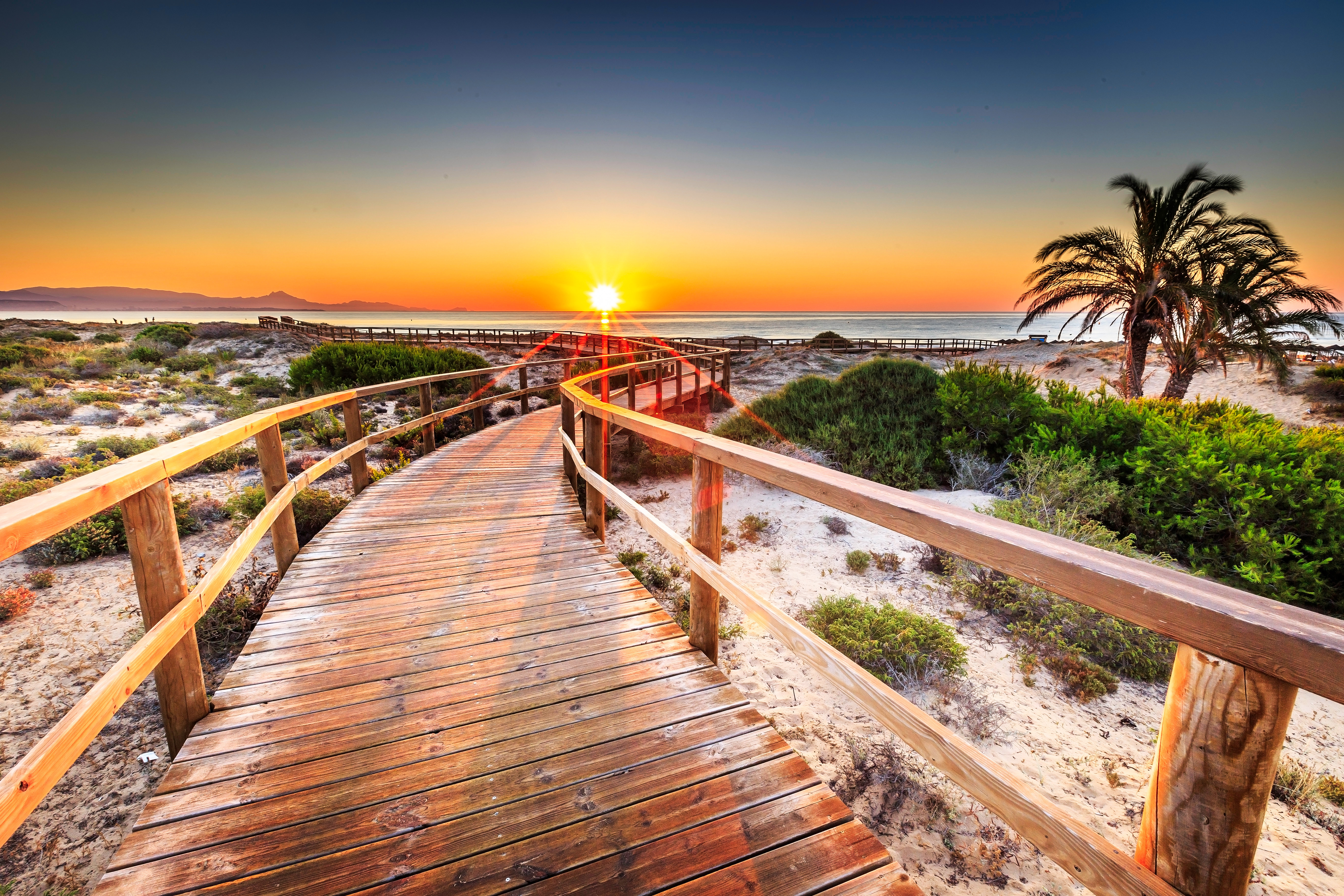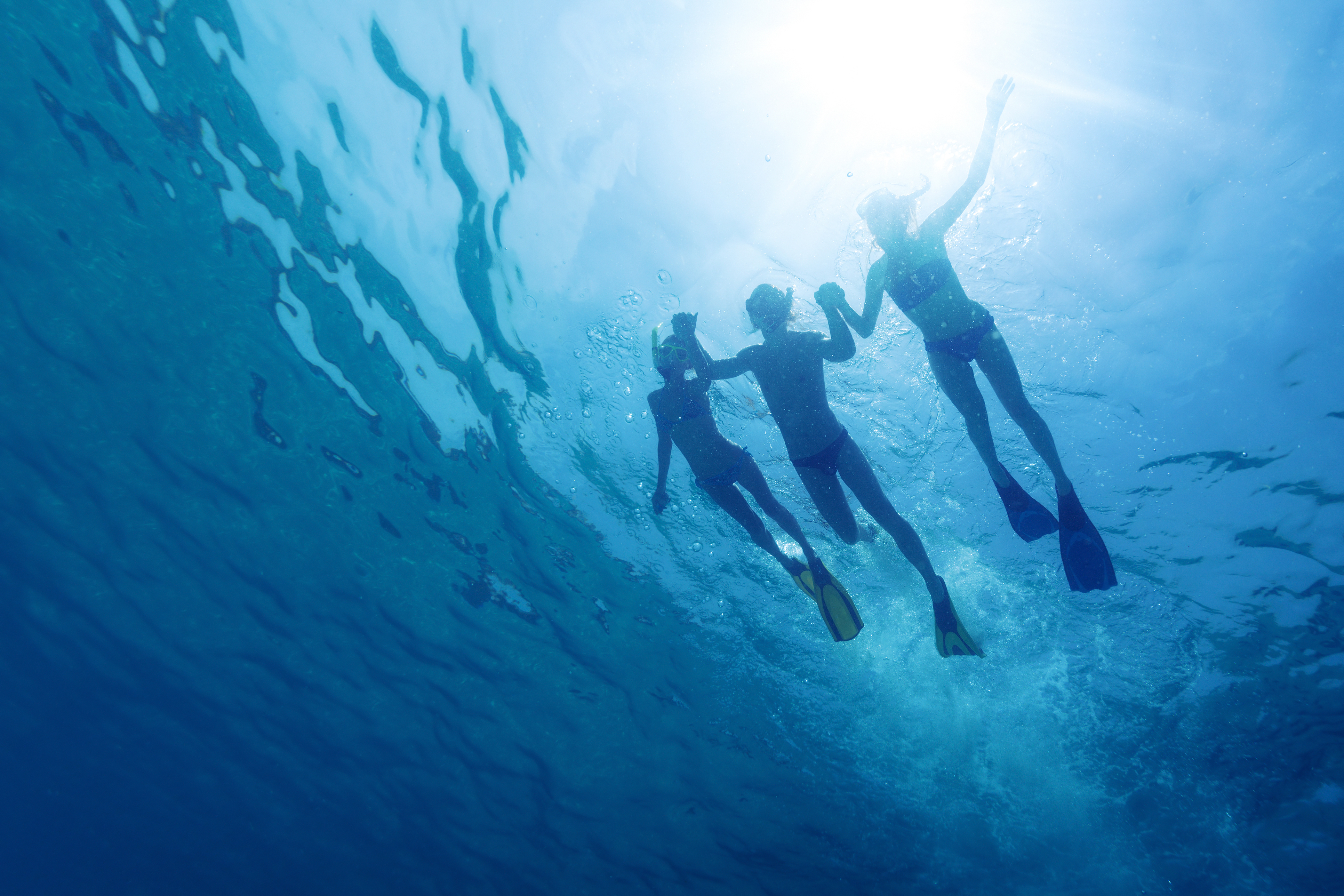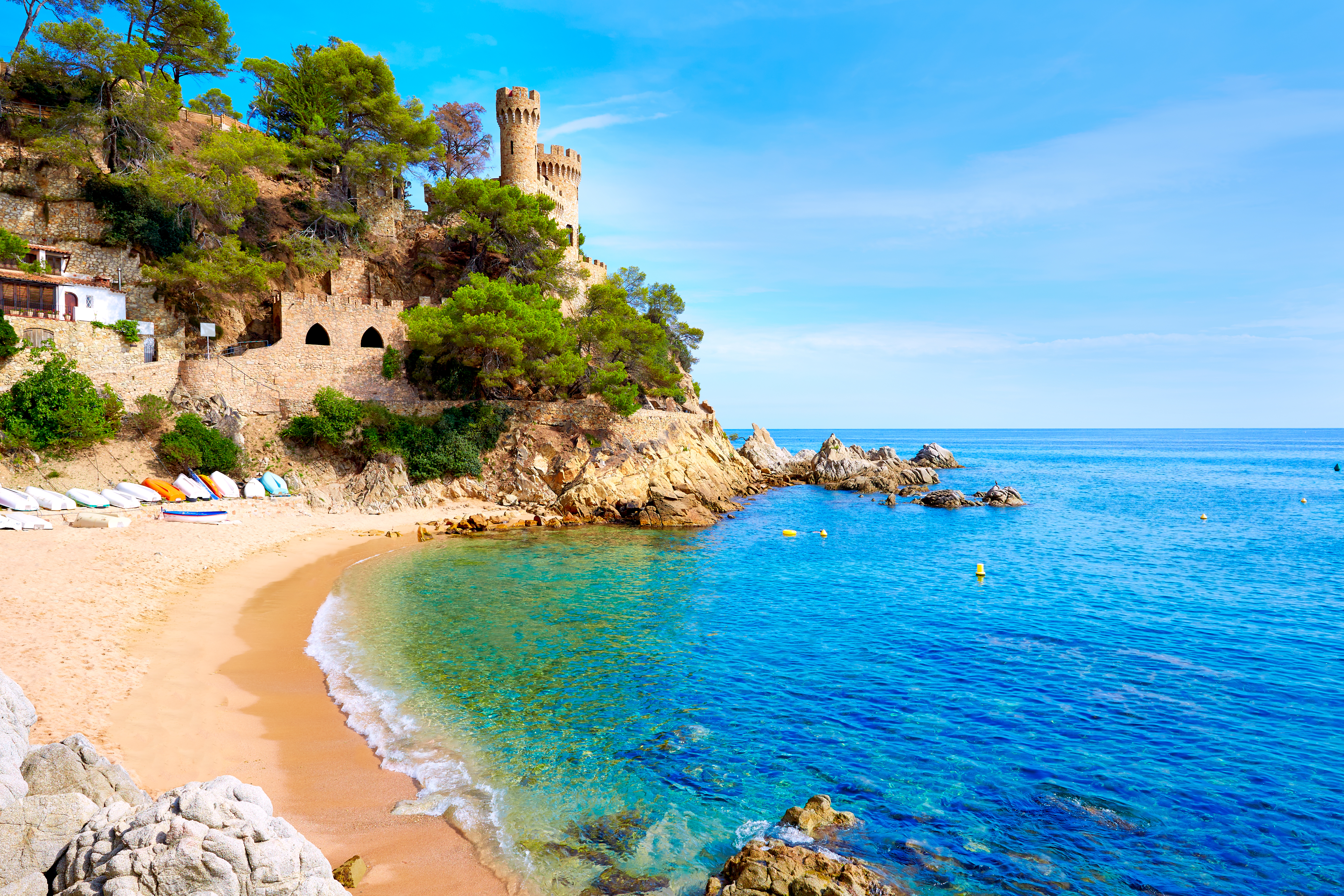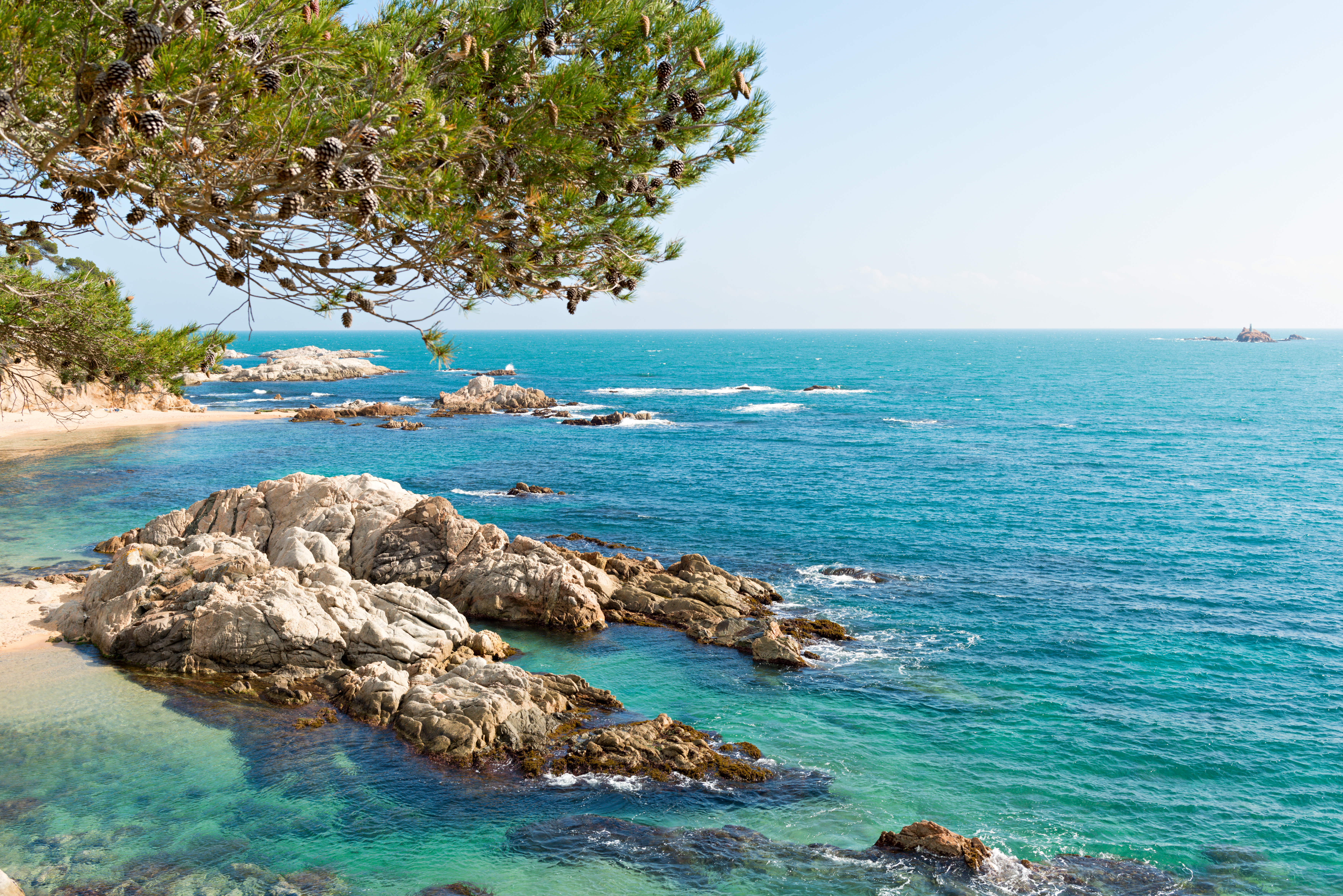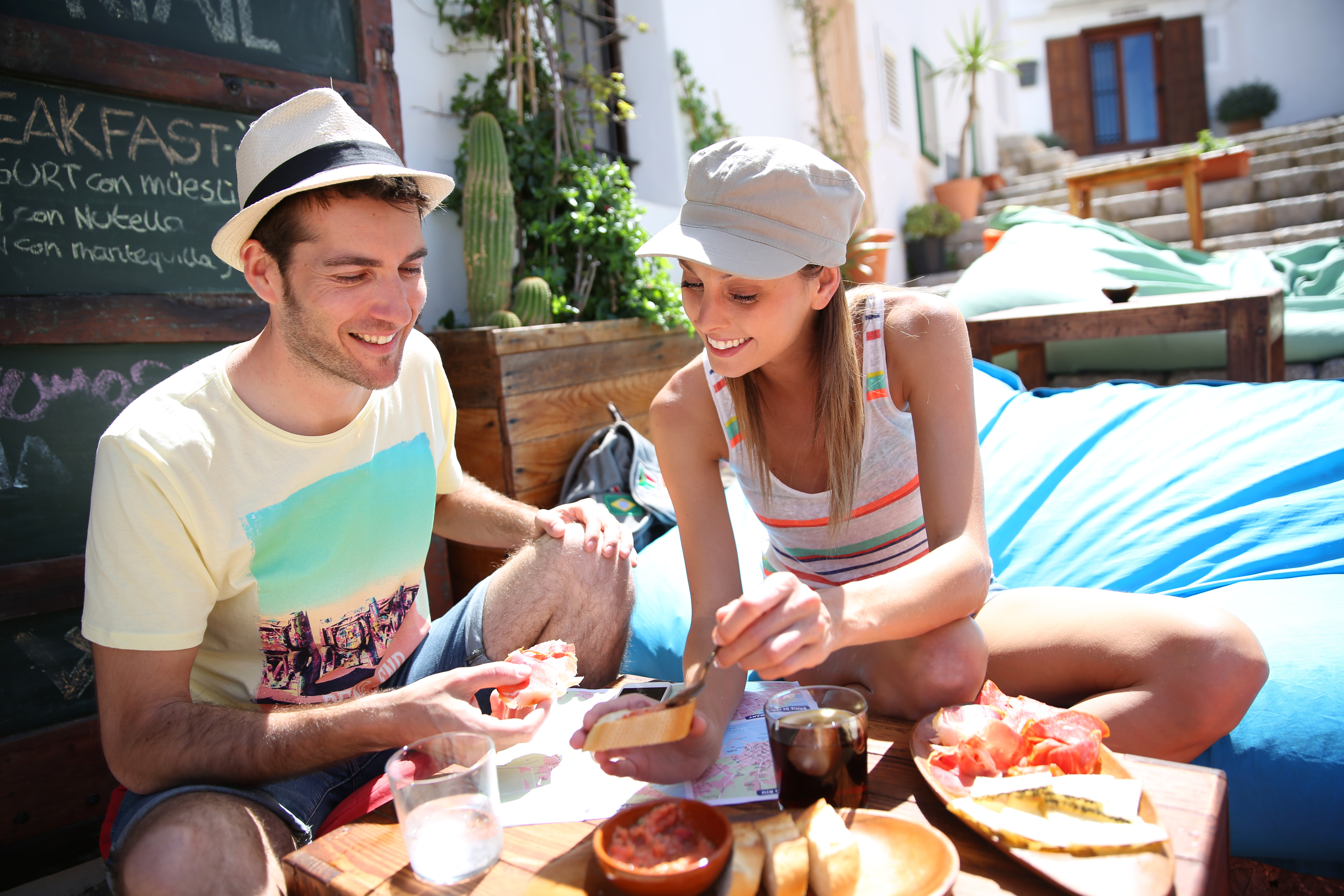Costa Brava: things to do to enjoy it the most
Costa Brava
Have you ever found yourself lost when searching the Internet for information about your holiday destination?
Enjoy the benefits of a rental property and have a splendid house-based holiday! Here you will find the most celebrated hidden spots on the Costa Brava. Along with something extra: useful information.
We know that you are impatient to find out about all the things you can do on the Costa Brava. BUT we should warn you: the Costa Brava is not just a popular party spot!
On the crystal-clear Mediterranean waters of the Costa Brava, water sports enthusiasts are spoiled for choice. Back on dry land, there are endless major cultural landscapes and many historic and architectural treasures. The Costa Brava has something for everyone, with an incredible nightlife, all kinds of outings and excursions, water parks and more.
There is no shortage of festivities and parties on the Costa Brava. Not only are there nightclubs, there are also many cultural festivals on the Costa Brava. The most famous Costa Brava festivals are: Carnival (in February/ March), Semana Santa (the week before Easter), the spectacular fireworks competition in Blanes (mid-July) and, during the summer, the National Festival of Porta Ferrada (one of the oldest festivals in Catalonia).
Come and discover the joyful atmosphere and the culture of the Costa Brava. You certainly won’t want to miss anything during your stay on the Costa Brava, right? Mission possible! Read on and find out how to spend a perfect holiday on the Costa Brava!
Click here to see rental villas on the Costa Brava
A rewarding day on the Costa Brava: you will get so much out of it!
What do you like to do when on holiday? Have fun with your children in the amusement parks and water parks of the Costa Brava.
For some people, a holiday on the Costa Brava is an energetic holiday, but for others it is synonymous with relaxation. While you are being sporty, you can enjoy the most beautiful views on the Costa Brava. As with golf courses and other leisure activities, the Costa Brava is very rich in… something that most men will find terrifying… SHOPS! Every town on the Costa Brava has its own shopping street. But the Costa Brava has even more to offer you.
Rest and relaxation are very easy to find on the Costa Brava. You can have a great massage or a pleasant walk through the mountainous regions inland from the Costa Brava.
You cannot miss a trip to some of the most-visited villages along the Costa Brava coastline. Alternatively, you should visit the picturesque villages of the Costa Brava and its beautiful countryside.
Getaways on the Costa Brava: amusement parks and water parks
For a change from the beach or from cultural outings, have an excellent day out at one of the amusement parks or water parks on the Costa Brava.
AguaBrava Park – Water park in Roses
Aquadiver – Water park close to Playa de Aro
Gnomo Park – Amusement Park (for children) in the vicinity of Lloret de Mar, on the road from Blanes.
Marineland – Water park and zoo (with dolphins, sea lions and exotic bird shows) in Palafolls.
Water World – the largest aquatic park on the Costa Brava, in Lloret de Mar.
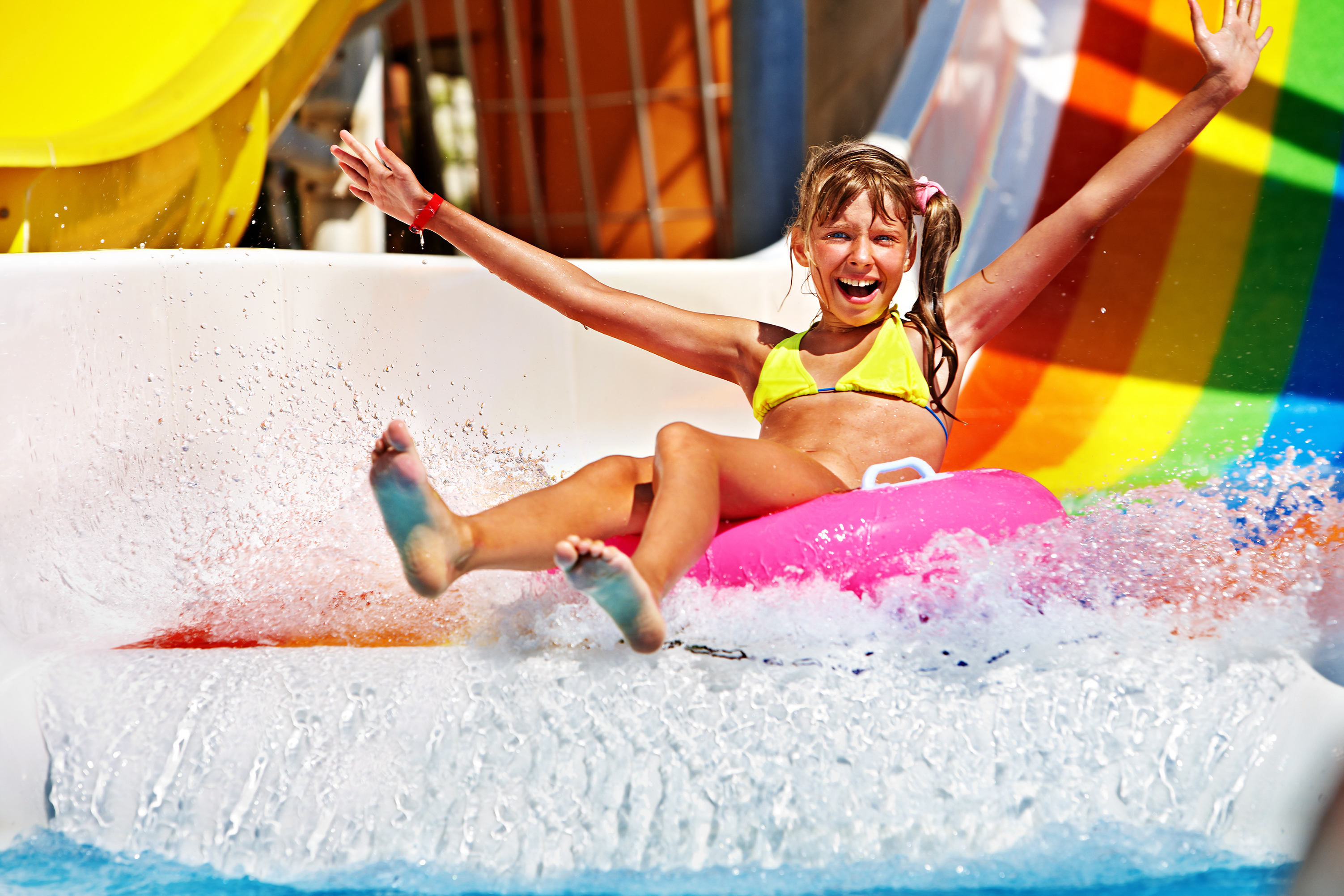
Places for impulse shoppers on the Costa Brava
The Costa Brava has many shopping streets where, for example, you can buy some great souvenirs. Here and there you will find shops selling clothes, shoes and accessories. But if you want even more variety, head to the major shopping centres on the Costa Brava:
Barcelona– There are many shopping centres throughout the city.
Espai Gironès – You will find it at the Girona and Salt motorway exit. It has more than 120 shops, a bowling alley, cinemas and a play area.
Mataró Park Shopping Centre – this is the largest shopping centre in Mataró and on the entire Costa Maresme.
Montgrí Comerç – This is a shopping centre in Torroella de Montgrí
La Roca Village – Gifts from the Costa Brava: take this opportunity to buy luxury-brand clothes at huge discounts (from previous collections).
Playa de Aro – Hundreds of shops in one of the biggest open-air shopping centres on the Costa Brava.
Enjoy the benefits of a rental property and have a splendid house-based holiday! Here you will find the most celebrated hidden spots on the Costa Brava.
markets on the Costa Brava
The sellers set up their stands once a week in many villages on the Costa Brava. The markets usually begin at 8 a.m. and begin to pack up at around 2 p.m. In fact, for every day of the week, you will find a market selling fresh fruit and vegetables, accessories, clothing, etc. Here is a list of the principal markets on the Costa Brava:
Monday – Blanes, Cadaqués*, Olot and Torroella de Montgrí.
Tuesday – Castelló d’Empúries*, Lloret de Mar, Girona, Palafrugell, Palamos, Pals, Verges and Figueres (fruit, vegetables and fish).
Wednesday – Banyoles, Begur, Sant Antoni de Calonge and Sant Pere Pescador.
Thursday –Tossa de Mar, Calonge, L’Estartit and Figueres (clothing, poultry, vegetables, fruit and fish).
Friday – La Bisbal, Playa de Aro and Port de la Selva*.
Saturday – Banyoles, Girona, Palafrugell, Pals, Figueres (fruit, vegetables and fish), Empuria Brava* and Villamalla*.
Sunday – Palafrugell, Sant Feliu de Guixols, Figueres (there is a flea market on the 1st Sunday of the month), La Jonquera*, Escala* and Roses*. * These are the biggest.
The various sports along the coast and inland on the Costa Brava
The Costa Brava is a Mecca for sports enthusiasts. One of the most fascinating places along the Costa Brava is the archipelago of the Medes Islands (Islas Medes or Medes Isles), in the vicinity of L’Escala. It is a perfect spot for diving, snorkelling or taking a boat trip.
Pals is a magnet for surfers. In addition, just as in other coastal villages of the Costa Brava, you will find other types of water sports and entertainment activities. For example, kayaking, water-skiing, jet-skiing and/or canoeing.
Golf is a very popular sport in Spain. You will find ten golf courses and nine varieties of pitch-and-putt on the Costa Brava. The most coveted are: Catalunya-Caldes Golf Course (Caldes de Malavella), Club Golf Costa Brava (Santa Cristina de Aro) and Peralada Golf Club (Peralada).
Nature will reward you with its most beautiful landscapes if you plan to walk along the coastal paths (el Camino de Ronda) of the Costa Brava. Or why not take a bike excursion inland, from Olot up to Sant Feliu de Guíxols (la Ruta del Carrilet).
The Costa Brava is magnificent when seen from the sky! You will see the rock formations, the plains of sand and the green hills. Float over the Costa Brava in a hot-air balloon, fly over it in a helicopter or go hang-gliding at Empúria Brava.
The Costa Brava has five sports resorts. During the summer, you will find incredible places for walking or adventure sports. When the winter season begins, all these resorts transform into winter sports places.
The most fashionable coastal villages on the Costa Brava
Some of the coastal towns on the Costa Brava have an unfairly negative reputation for mass tourism and a wild nightlife. This is just one more reason to come to the Costa Brava and discover the truth! The towns with the best reputation are: Blanes, Empuriabrava, L’Estartit, Lloret de Mar, Palamós, Playa de Aro and Roses.
Blanes
The southernmost town on the Costa Brava has very beautiful beaches and, close to the port, a unique symbol called “The Palomera”. With its two impressive botanical gardens and its historic town centre, Blanes is unquestionably an asset to the Costa Brava.
Empuriabrava
Empuriabrava is the ‘Venice of Catalonia’ on the Costa Brava. Many of the houses are surrounded by canals and moreover, it has one of the largest marinas in the world.
L’Estartit
L’Estartit is very attractive, with a wide, sandy beach and a large number of places of entertainment. In L’Estartit, you will also find one of the treasures of the Costa Brava: the divers’ paradise that is the Medes Islands (Islas Medas or the Medas Isles).
Lloret de Mar
Get to know the great nocturnal atmosphere of Lloret de Mar and discover two of the best, but still relatively unknown, places in Lloret de Mar: Cala Banys and Cala Canyelles. If you enjoy visiting historical ruins, go to Roca Grossa and be sure to take a walk along the path that goes from Santa Clotilde to Tossa de Mar.
Palamós
Palamós is a renowned and very peaceful fishing village, where they catch the best prawns. The harbour is still very important and has one of the biggest fishing fleets on the Costa Brava.
Playa de Aro
This tourist town has a number of facilities, and this means that it is ready and waiting to satisfy all your needs. Its beach awaits you, as well as its high quality restaurants, bars and outside terraces, where you really make the most of your holiday.
Roses is the primary fishing port on the north coast of Spain. Here are some of the reasons why you will fall in love with Roses: this town is exceptionally beautiful and incredibly peaceful, with steep cliffs and charming small beaches.
Costa Brava: typical historic villages
The history of the Costa Brava is extremely interesting and it has many cultural treasures. We advise you to visit the most typical villages of the Costa Brava: from small villages such as Banyoles, to the artistic village of Cadaqués. You can also visit Salvador Dalí’s town, Figueres, the capital of the province of Girona, or towns such as La Bisbal, Palafrugell, Peralada, Tossa de Mar, S’Agaró or Ullastret.
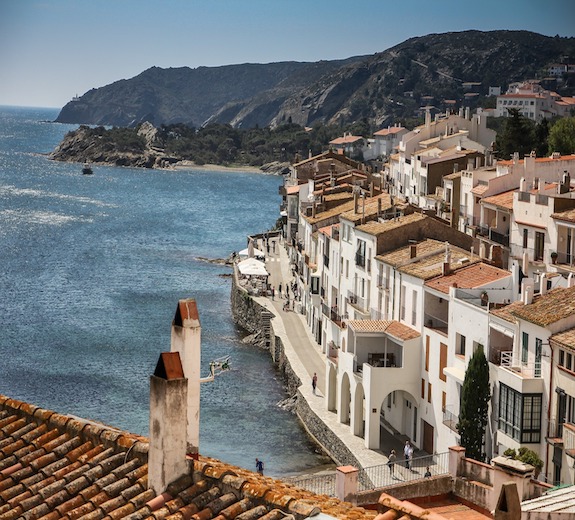
Banyoles
Banyoles is internationally well known, even though hardly anyone will recognise its name. During the 1992 Olympic Games, Banyoles was in the spotlight during the rowing competition which took place on its lake. Banyoles is surrounded by a beautiful landscape of fields and small hamlets. In other words, it is the ideal departure point for a walk or a bicycle ride.
Cadaqués
Cadaqués is a picturesque village, where many artists and intellectuals live. You will find art galleries everywhere and you will encounter unusual houses in the shape of cubes, including the former home of Dalí, or churches with baroque details.
Figueres
The main street, called La Rambla, will impress you with its neoclassical and modernist buildings. The largest building is the Teatro-Museo Dalí, with works of art and paintings by the renowned and unique Salvador Dalí.
Girona
Girona’s cathedral is the highest building in the Old City, the Barri Vell. If you go there, you will be surrounded by mediaeval walls and typically Gothic and Baroque-style buildings. Apart from all this, and just like in Besalú, you also have the option of visiting the Jewish district, el Call Jeu. The most impressive vestiges of Jewish culture are the Banys Arabs (Arab baths) dating back to the 12th century.
La Bisbal
La Bisbal is famous for its production of ceramics and its boutiques and workshops, which are located on the main street.
Palafrugell
The old fishing neighbourhoods no longer exist, and they have become tourist areas. But there are still many places where you can relax: start a walk at Calella de Palafrugell, passing by Llafranc and finish at Tamariu, or why not visit the nearest village, called “Pla”. There, you will find a museum dedicated to the cork industry (in the heart of the village).
Peralada
Peralada is a small mediaeval village with an impressive castle, el Castillo de Peralada. Inside the castle, wine was produced underground and in its cellars.
Tossa de Mar
Tossa de Mar is a mediaeval town with a castle and a maze of small streets. You will find a number of hiking trails there that will lead you to the historic buildings and museums, such as the Casa Flaguera at the entrance to the Vila Vella (the old defence tower and the walls).
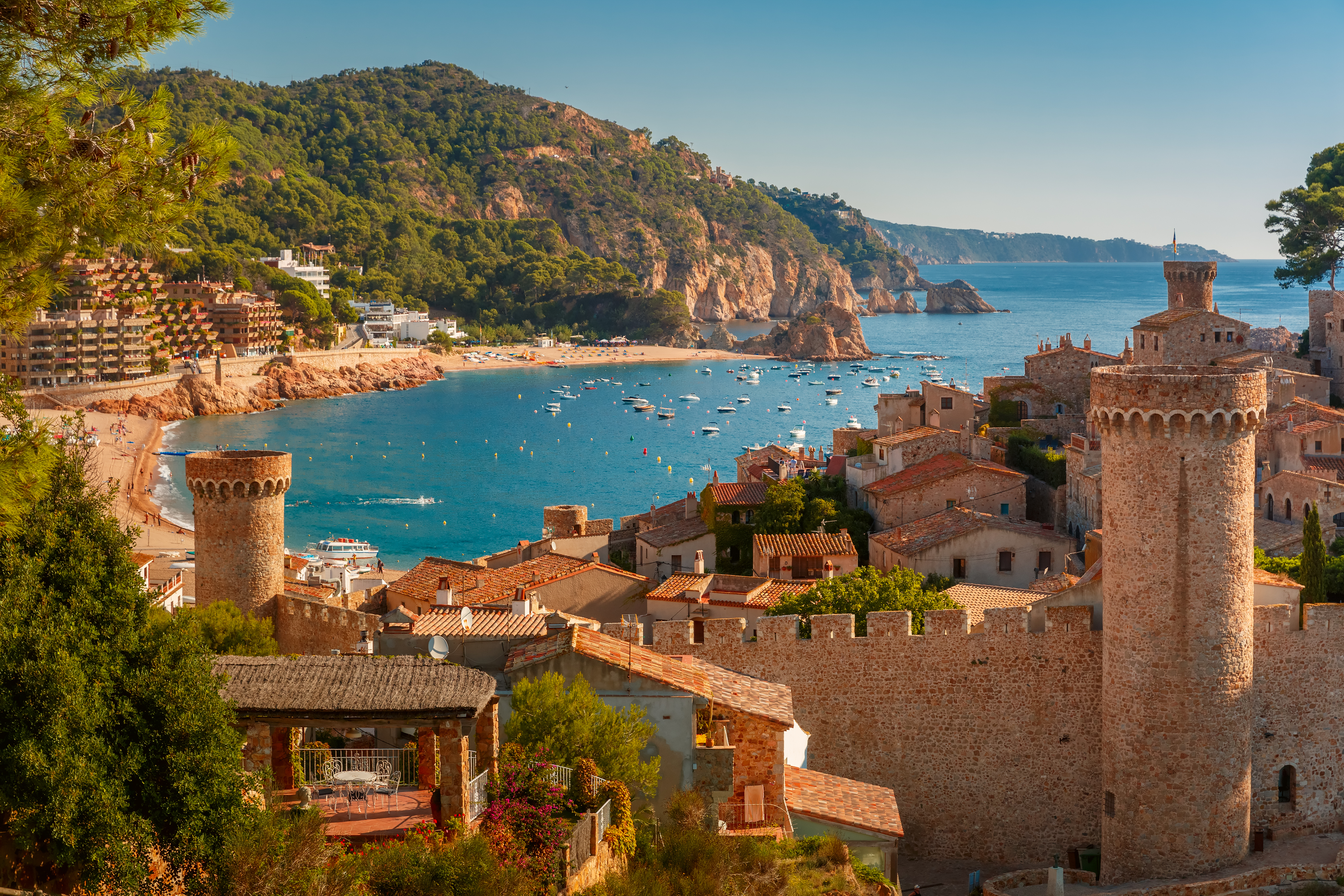
S’Agaró
The jet set of the Costa Brava goes to S’Agaró. It is a luxurious place for people-spotting and for being spotted.
Ullastret
Ullastret was the most important Iberian settlement on the Costa Brava. Its ruins are of interest because of their sheer size and their good state of preservation (people lived here from the 6th to the 2nd century BC).
Places of interest on the Costa Brava and its historical / cultural heritage
The Costa Brava has a rocky coastline, long beaches and green inland countryside which reaches as far as the Pyrenees. The seabed is filled with magnificent corals and there is an impressive natural park called the Medes Islands (Islas Medas or Medes Isles). The natural aspect of the Costa Brava is enormous and breathtaking. Cap de Creus, the Aiguamolls Natural Park in L’Empordà and the botanical garden are very important to the Costa Brava.
Cap de Creus
The highest point of the Costa Brava is the Cap de Creus Natural Park. It is also home to many species of birds. As you stroll around or enjoy a sensational sunset, you will feel the peaceful atmosphere of the Costa Brava.
Aiguamolls de l’Empordà Natural Park
This partially protected nature reserve, called “Aiguamolls de l’Empordà”, has some interesting hiking trails. If you want to watch birds, the best time of the year is in autumn or spring. You will see, without doubt, one of the 323 species of birds on the Costa Brava.
Medes Islands (Islas Medas or Medes Isles)
Facing the coast of Escala, you will find the Medes Islands. There you can dive, snorkel, or admire the greatest underwater treasures of the Costa Brava from a glass-bottomed boat. Allow your senses to wander while you observe the beauty of the Meda Gran, or go to the southern islands of Bernat Carall and Gran.
Botanical Gardens
Some admirably landscaped botanical gardens are planted on the Costa Brava. A few examples of botanical gardens are: the Jardí Botànic of Cap Roig (in Calella de Palafrugell), Pinya de Rosa (Blanes), Santa Clotilde (Lloret de Mar), Marimurtra (Blanes) and the Francesca Gardens (Girona).
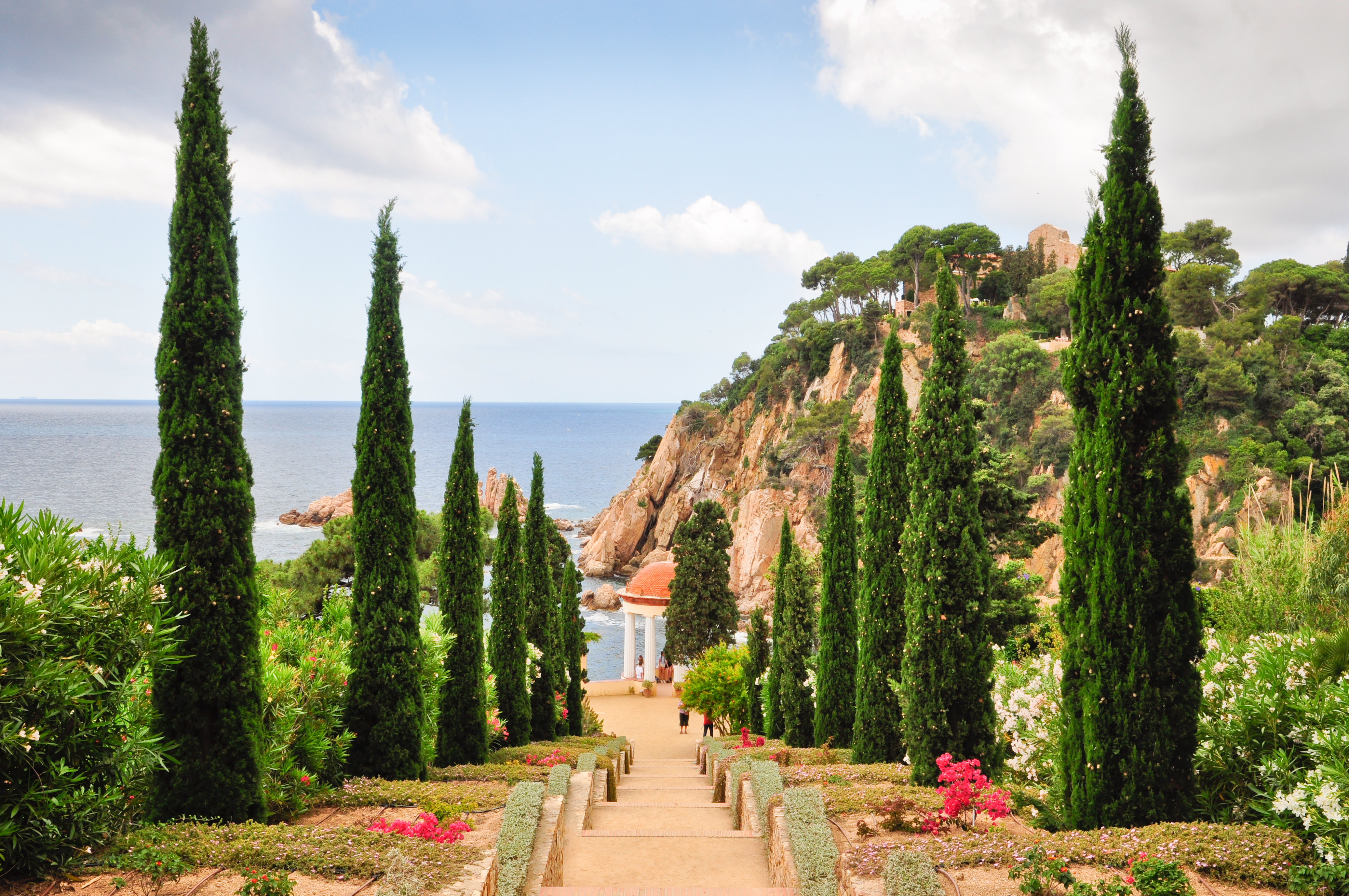
But we must not forget the historical/cultural heritage. Inland on the Costa Brava, there is so much more than you might expect. The most interesting places on the Costa Brava that you will not want to miss are: the Archaeological Ruins of Empúries, the Roman monastery, the mediaeval towns of Pals and Peratallada and the wine region of L’Empordà.
Excavations in Empúries
Step back in time at Empúries. During the 6th century BC, it was a time of negotiations with the Greeks and, in the year 218 BC, the Romans built a general military barracks. There are mosaic floors, elegant pillars and the ruins of the Greek city of “Neapolis” (New Town), which were buried under a thin layer of sand. The ruins are brought back to life in the audiovisual part of the Archaeological Museum, where you will also find exhibitions of excavated art and implements.
Sant Pere de Rodes
In Sant Pere de Rodes, you can visit one of the most important Roman buildings in Spain, the Monastery of Sant Pere de Rodes, with its magnificent views. Cap de Creus and the French border are not far from this monastery. Are you coming to the Costa Brava in July / August? If so, you can attend the annual musical event that takes place in the monastery (classical music concerts).
Pals
Pals is a traditional mediaeval town, where you can still see the defensive walls. You will feel as though you have returned to mediaeval times because of the many mediaeval buildings. With its fountains and squares and the architectural details of the house fronts, you will feel as though you are in a fairy tale.
Peratallada
The old village of Peratallada is known for its old stone buildings, its maze of cobbled streets and alleys. Inside the old village, you will discover many restaurants, small shops and houses that belonged to artists. Outside the thick defensive walls, you will find the Roman church that dates back to the 13th century.
The L’Empordà Wine Region
The wine region of L’Empordà is responsible for the production of a quality sparkling wine and a variety of wine cellars. How do they make this wine? Castillo Perelada will show you the cellar and garden, while the wine museum teaches you about the history of the wine.
Outings/excursions on the Costa Brava and from the Costa Brava
Discover everything about the Costa Brava without having to read dozens of tourist guides. Fortunately, the travel agency people will send you all the information you need and the latest news. For most of the holiday destinations on the Costa Brava, you will find local travel agencies who organise various types of excursions in the region.
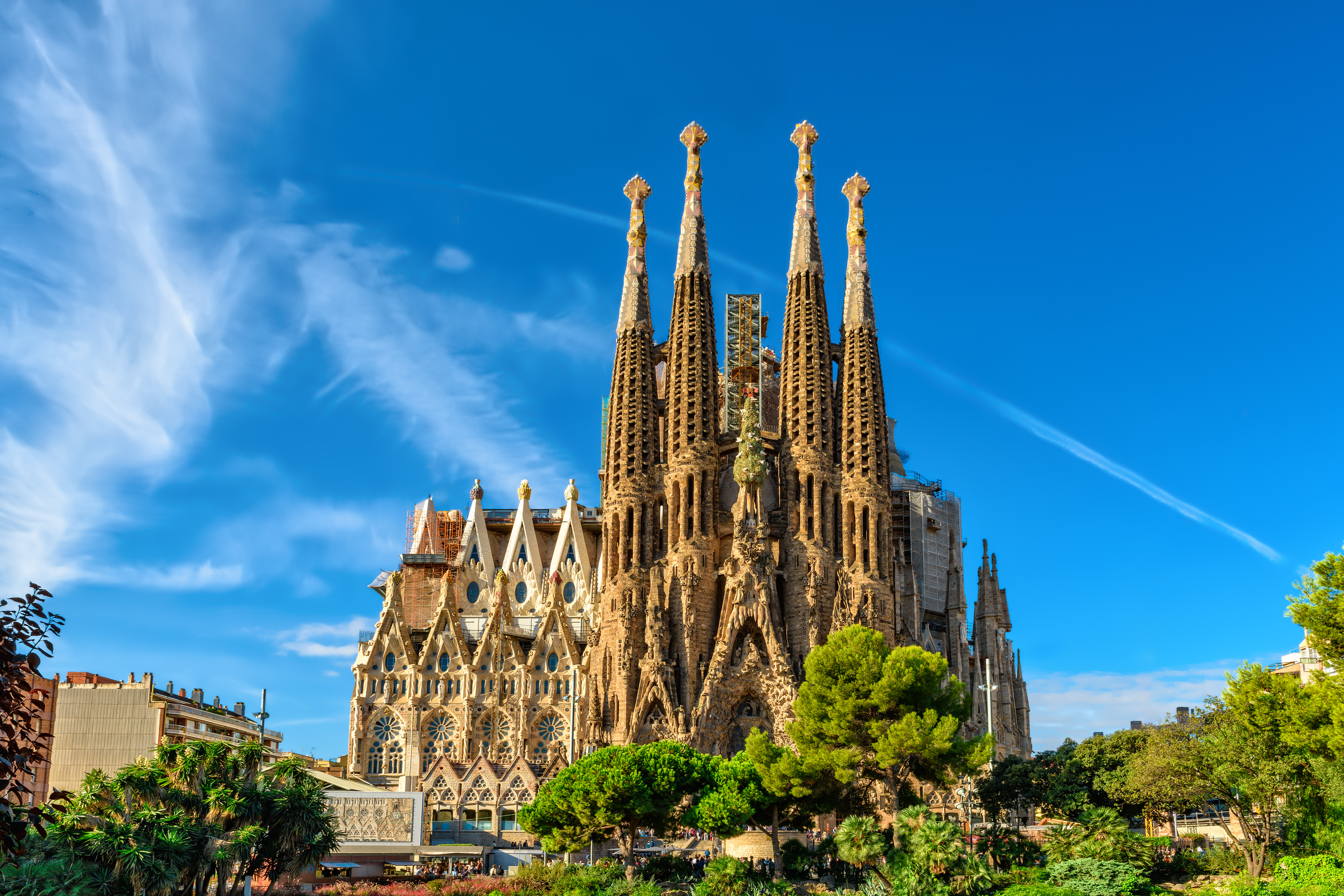
We suggest that you take guided tours to Barcelona, Montserrat and Cremallera, a visit to the village of Rupit, el Far and Besalú and the Dalí museum. Would you like to go on a rollercoaster ride, take in some water activities and have endless fun? Go to the Port Aventura amusement park (and water park)!
If you are looking for more action, you can try scuba diving or take a jeep or quad safari. On a hot day, you will certainly prefer a refreshing activity, so why not enjoy an outing in a catamaran or on a boat?
Your evenings on the Costa Brava will be anything but boring! There are many restaurants and bars, but if you want a little variety, the Costa Brava has something special for you: enter into the atmosphere of the Costa Brava with a flamenco show or a mediaeval evening.
– Andorra
You are already on holiday abroad. But what could be better than visiting two countries during your holidays on the Costa Brava? From the Costa Brava, you can easily head inland. You will see beautiful green hills, the ancient ruins of lava and, from time to time, a typical house of the region. With the Pyrenees to your right, you will arrive in the tiny country of Andorra. Andorra is a wonderful ski station, and it is very famous thanks to its duty-free shops. If you like shopping, the main street is the perfect place for you! And, in addition to all the shops, you can take some beautiful pictures, because the landscapes there are breathtaking.
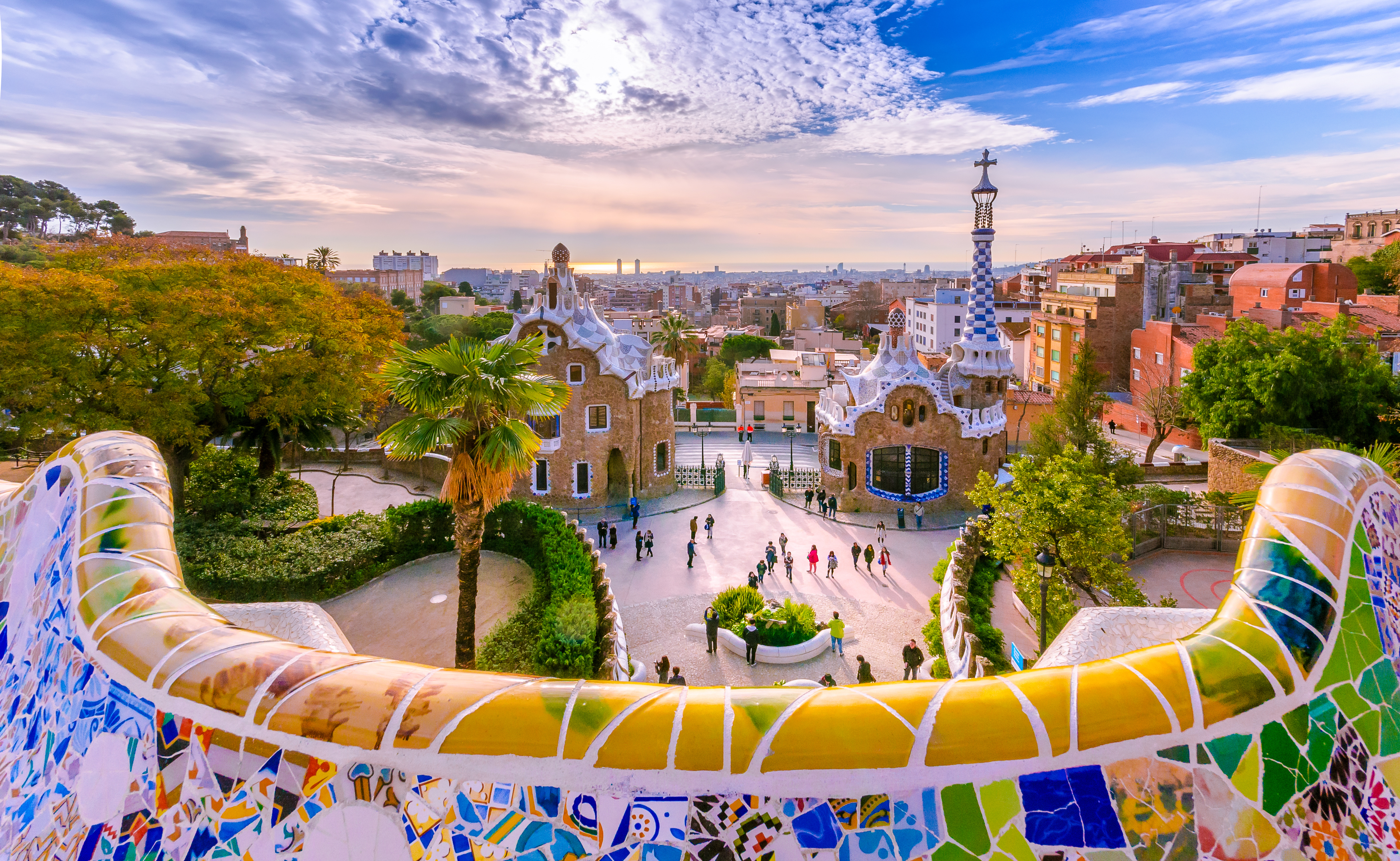
– Barcelona
Barcelona Aquarium – Come to the Aquarium for a unique experience and discover the underwater life of the Mediterranean. Stroll around among all kinds of fish and aquatic animals, and walk along a glass tunnel that is 80 metres long. It’s an unforgettable experience. One thing is sure – you won’t be bored at the Barcelona Aquarium. There are 35 pools divided into themes (6 altogether).
Barcelona Camp Nou – Pay a visit to the grounds of FC Barcelona football club. You can also visit the museum where the most famous cups are on display, check out Johann Cruijff’s boots, the changing rooms and the players’ bench.
The city of Barcelona – As you wander around all the tourist areas of Barcelona, you will have the opportunity to discover the latest trends and some historic details.
Barcelona by night – For those who enjoy the city at night, there is an afternoon and evening excursion to Barcelona. At lunchtime, you have the panoramic tour of Barcelona, and at the end of the trip you will visit the foot of the Montjuïc hill. During the impressive fountain show, several coloured fountains dance joyfully to the rhythm of classical music.
Barcelona Zoo – Would you like to see some lions and tigers without going on a jeep safari? Come to Barcelona Zoo. This zoo is unique thanks to its huge variety of animals (more than 450!). You will see felines, reptiles, dolphins and different kinds of monkeys! And in addition to this, there is also entertainment for children.
– The world of Dalí
One of the most visited museums in Spain, is the Teatro – Museo Dalí (Figueres). You won’t be able to tear your eyes away from this superb building with Dalí’s works of art on the floor, ceiling and walls of the museum as well as in unexpected parts of the garden. Dalí’s old house can be found in Port Lligat (Cadaqués). This is where Dalí found inspiration for many of his works. With an advance booking, you can take a tour of the inside of the house. Apart from this, Port Lligat is also the perfect place for nature enthusiasts and art fans.
Casa – Museo Castell Gala Dalí (Púbol) is marvellous. Stroll around the palace and enjoy the paintings and other artworks, along with the famous statues of the world of elephants in the fascinating garden.
– Montserrat and Cremallera
The historic and religious village of Monsterrat is the spiritual heart of Catalonia. This Benedictine monastery is more than 1,000 years old, and it attracts many visitors every year. Its boys’ choir usually begins every day at around 1 p.m. (except during school holidays). The most exciting work of art that can be found there is the Black Virgin, “La Moreneta”, which is named after the stone sculpture of the Virgin Mary in the Santuario de Lluc monastery in Mallorca. The village is located in the National Natural Park of Montserrat, making it an ideal place for walks.
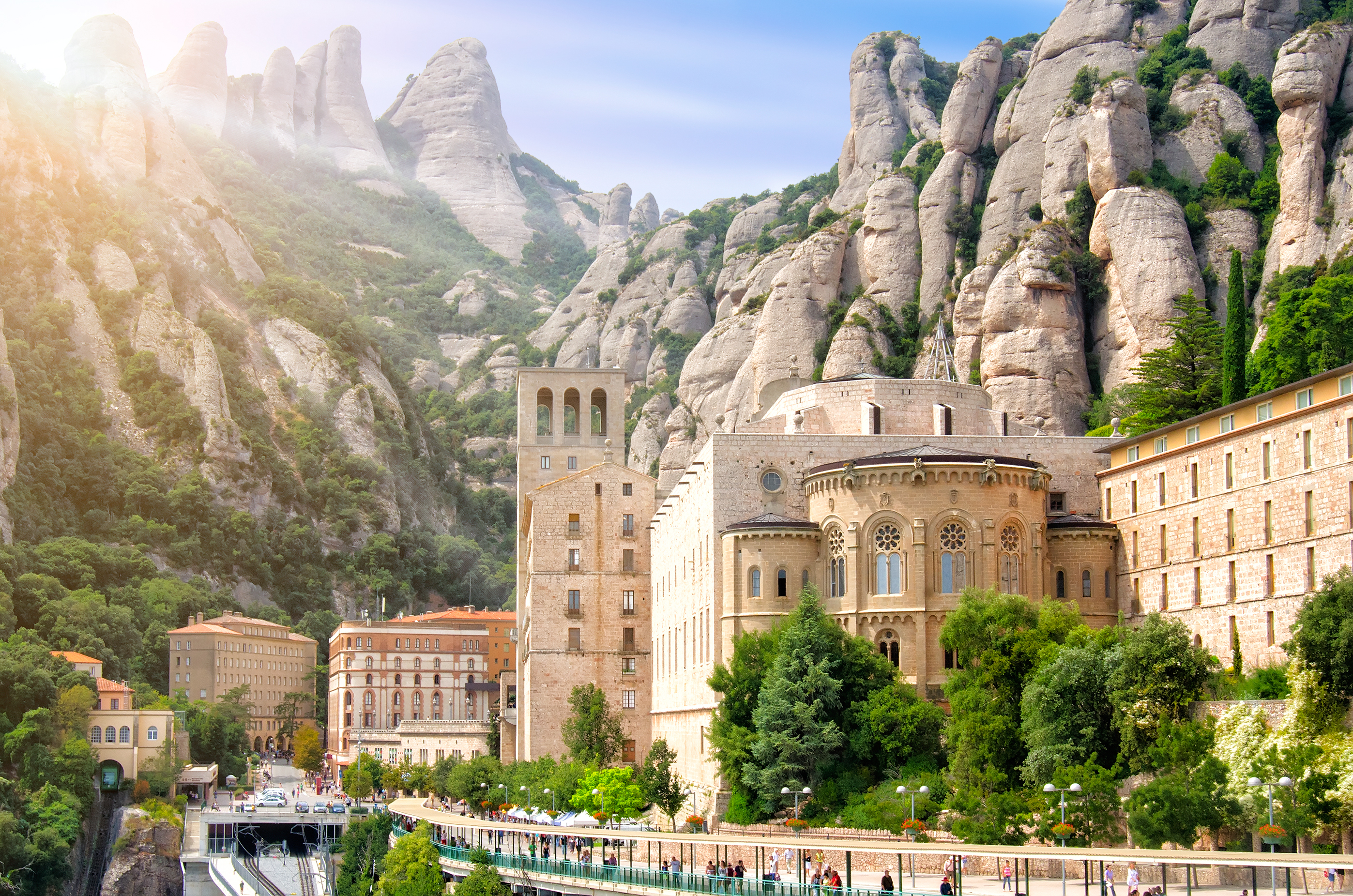
– Port Aventura
An amusement park for children of all ages. This park is composed of different thematic areas, with rollercoasters, water attractions and much more. This also applies to younger children, because there is nothing more annoying that being told that you are too young to go on a ride! That is why Port Aventura has created a special area exclusively for the smallest ones among us! And, at Port Aventura, there are a lot of places to eat or have a drink, so don’t worry, you won’t die of hunger or thirst.
– Rupit, el Far and Besalú
If you take a guided country village tour, you will land in a completely different world. You will visit areas that are almost uninhabited, breathtaking mountain landscapes and the mediaeval village of Besalú. After all this walking, you will probably want a good meal. One place that you won’t forget is the priest’s restaurant. After the meal, you will be served a very tasty liqueur. Mmmm…
– A Spanish Evening (La Masia / La Siesta)
Songs, guitars and flamenco are the symbols of Spain. Filled with emotion, Flamenco is a way to express a range of feelings, from sadness to joy. Make the most of all this beauty while enjoying a delicious dinner or an aperitif with appetisers.
– Mediaeval Spanish Night (Castillo Medieval)
The Mediaeval night is a truly spectacular evening! Children and adults can enjoy an evening of magnificence and splendour. The Duke and Duchess will welcome you, with beautiful servants who will serve your food while the knights and their faithful steeds will take care of the mediaeval merriment. The evening culminates with whirling flamenco dancers and musicians on stage.
– Beach Party
Do you want an all-inclusive day out on the Costa Brava? First you will go for a sail on a boat with plenty of atmosphere and be taken to a secret location. Once you reach the deserted beach, it will be time to celebrate! Have a blast on the water on the flyfish or bounce over the waves on a speedboat. Anything is possible! It goes without saying that the team will also organise some games. And to make the atmosphere even more pleasant, you can listen to great hit music while you eat and drink as much as you want. Departure points: Lloret de Mar, Blanes, Malgrat de Mar, Santa Susanna and Calella.
– Catamaran Cruise
Relax on the Costa Brava with a catamaran cruise. The boat’s crew will look after you to ensure that you enjoy the sea and sun. Once you are on the water, the entertainment begins. During the cruise, the catamaran will stop so that you can dive, jump off the boat or simply relax in an inflatable rubber doughnut. Departure points: Lloret de Mar, Blanes, Malgrat de Mar, Santa Susanna and Calella.
– Jeep Safari
The Costa Brava is not a jungle, so you won’t see any lions, tigers or elephants. Boring? No, you will spend lots of other exciting moments on the Costa Brava. Over the course of a safari adventure in a Jeep, you will be travelling into the virgin lands of the Costa Brava. In just half a day or even a full day, you will discover a new side to the Costa Brava. Would you like another adrenaline shot? Drive the Jeep yourself! Now of course this will depend on several factors, such as the age of your driving licence, your driving skills, the number of people on the Jeep, etc. Don’t forget to bring your driving licence with you!
The beaches of the Costa Brava
After a day out in Barcelona or after a bike ride in the hinterland, you will probably want some beach time. The Costa Brava has many beaches where you can picnic, play a game of beach volleyball or simply soak up the sun on a lounger. The beaches are of fine or coarse sand. On the majority of them, you will find an information panel on which you will see that, for example, dogs are not allowed on the beach. If you want to take your dog on walks along the promenades and boulevards, it must be kept on a leash.
Some beaches have qualified for the Blue Flag on the Costa Brava:
• Aiguablava (Begur) – a romantic beach on the Costa Brava with a few fish restaurants.
• Blanes:
Blanes – 625 metres long, with all kinds of services.
Cala San Francesc – this is a romantic bay located between Lloret de Mar and Blanes.
• Cadaqués – this is a coastal zone composed of many beaches and coves. You will also find a small bay that is reserved for naturists.
• Calella de Palafrugell – this is one of the most romantic beaches on the Costa Brava. It is divided into three small beaches: Can Calau (60 metres), Port Bo (55 metres) and Port Malespina (50 metres).
• Castell (close to Palamós) – This is one of the only beaches of the Costa Brava that are not remotely touristy.
• Lloret de Mar:
Lloret de Mar – this beach is 1,300 metres long with thick sand. During the summer period, it has all the main facilities and services, included a mini-club for children.
Cala Canyelles – this is a 400-metre-long beach with SOS, parking, water sports facilities, restaurants and a harbour.
Fenals – this beach is 775 metres long with many restaurants, bars and a car park.
• Playa l’Amadrava (Roses) – This is a small beach with a car park, restaurants and bars. It is also accessible to people with reduced mobility.
• Mas Pinell (Torroella de Montgri) – this is a 3,100-metre beach, which is ideal for surfers because there also tends to be a wind there.
• Tossa de Mar:
Cala Codolar – this is a 90-metre beach with a bus service, car park and showers.
Cala Giverola – this is a long, calm 175-metre beach where you can hire sun loungers and parasols.
Mar Menuda – this is a beach of 180 metres with SOS, car parking, bars and restaurants. It is also accessible to people with reduced mobility.
Food and Drink: gourmet cuisine and special suggestions on the Costa Brava
Just like everywhere in Spain, on the Costa Brava, the restaurants and bars offer typical Spanish dishes. For example, refreshing gazpacho on a hot summer day. This is a kind of cold tomato soup, but it is much more delicious than you might imagine!
You can have as many types of tapas as you want. Or you can have a combination of small snacks, such as calamari (rings of fried squid), gambas (jumbo prawns), pan con tomate y ajo (bread with tomato and garlic) and pieces of cheese.
And who hasn’t heard of the famous paella? A rice dish with fish, vegetables and sometimes meat. Preparing this delicious meal (if you like rice) is more complicated than it sounds. When it comes to making paella, the type of cooking dish (also called paella) is very important.
Now that you are on the Costa Brava, you will probably have experienced something new from this coastal area. The cuisine of the Costa Brava includes a lot of fish and seafood. For those who love meat, a stay on the Costa Brava is also perfect, because the most popular food is pork sausage. Of course, there is also chicken and other types of meat.
Sweets, confectionery and more sweets. For a high quality dessert, the crema catalana is our best suggestion.
Genuinely traditional gastronomy can be found inland and in the small fishing villages. Nevertheless, the major coastal cities also do their best to offer you as many international dishes as national ones.
Nightlife on the Costa Brava
The most famous seaside resort on the Costa Brava, in terms of nightlife, is Lloret de Mar. If you want to have fun, head for the Gran Casino Costa Brava. In addition, you will also find more than 100 pubs, nightclubs and very famous clubs, where you can party 24 hours a day in summer.
Located 5 kilometres south of Lloret de Mar, you will find the last village on the Costa Brava: Blanes. It is a peaceful town that is very popular with families. But you should know that even Blanes has a nightlife with lots of atmosphere!
Playa de Aro is another town on the Costa Brava that likes to party. But, like Blanes, Playa de Aro is a charming town for young people and for families (with children) for some great evenings out during your holiday. For people who enjoy playing for money in an elegant setting, there are two casinos on the Costa Brava. At Lloret de Mar, you will find the Gran Casino Costa Brava, which is housed in a recently designed and very modern building. In the opposite direction, towards the north of the Costa Brava, you will find the Casino Castell de Peralada. You will be surrounded there by magnificently landscaped, beautiful gardens. Whether you spend the night at the roulette table or in another part of the casino, it will be a fabulous evening in a handsome 14th century castle.
Travel information for your stay on the Costa Brava
What do you think of the location of the Costa Brava?
It’s not the most important thing, but it is a pity not to know about where you are going on holiday. That is why we have put together this informational guide.
The Costa Brava is the principal coastline on the north-western side of Spain. It stretches from Portbou as far as (and including) Blanes. In addition to this, it is part of the province of Girona, which is itself part of Catalonia (one of the 17 autonomous regions of Spain).
Each part of the Costa Brava has its own speciality. The different regions are divided into comarcas: la Selva, el Baix Empordà, l’Alt Empordà, el Pla de l’Estany and el Gironès. These places, discovered in the 20th century by many important artists, have become second homes to many rich people from Barcelona.
The weather and climate of the Costa Brava
The Costa Brava is very fortunate as it has a gentle and pleasant Mediterranean climate. This gives you hot summers with average temperatures of 28 degrees. It rains from time to time, and this is most likely to occur in April or May.
Do you intend to come to the Costa Brava between October and April? Then you are coming to a region where the winters are very mild. The average minimum temperature is just 3 degrees, against average maximum temperatures of 21º C.
The Costa Brava is even better than you imagined, isn’t it? Sometimes the Tramuntana wind blows along the Costa Brava. The bad news is that this type of wind is really cold. But don’t worry, because once the wind has passed, the Costa Brava sky becomes even bluer than usual as the fine weather returns!
Transport on the Costa Brava
In terms of transport, the Costa Brava will not disappoint you. Some routes are not perfect, but the airports of Barcelona and Girona are very well connected to the Costa Brava. We recommend using a car (or hiring one). What do I need to hire a car? A form of valid ID, your driving licence and money, of course. Sometimes you may be required to leave a credit card deposit before you can take the car. Don’t forget to take out car insurance! Parking in Spain can sometimes be a little tricky, and you could, for example, scratch another person’s bumper!
In terms of public transport, buses and trains are relatively inexpensive. There are good transport links between the various coastal towns. On the Internet, you will find the websites of bus companies like Pujol or Sarfa, which are really useful. In every bus station, you will find a tourist information desk (Oficina de Turismo) where you can get information about the most up-to-date bus timetables for the region.
From Blanes, Girona, Figueres, Llançà and Portbou, you can take a train to reach, for example, the most visited city in Spain: Barcelona. You will find up-to-date timetables and other useful information in the railway stations, tourist information points (Oficina de Turismo) and on the Renfe website.
Taking a taxi can be a very practical solution for short trips to or from the town centre or when you want to return to your holiday rental late at night. Taxis are not very expensive. Keep in mind that at night, at the weekend, or if you are travelling with luggage, the taxi will cost more than usual.
Would you like to get around the hidden spots of the Costa Brava easily? Scooters and motorbikes are excellent means of transport. They are also a great way to beat traffic jams! There is no obligation to wear special protective clothing, but we do recommend taking precautions to ensure your personal safety – and of course wearing a helmet is mandatory. If you want to hire a motorbike or scooter, the procedure is the same as for hiring a car: you will need some valid ID and your driving licence. And be sure to take out all the necessary insurance! Sometimes they will take your ID number as security, and it is up to you as to whether you accept this or not.

Time zone on the Costa Brava
UTC +1: Central European Time. With a western border of 7.5 degrees and an eastern border of 22.5 degrees.
About money
Currency: € Euro
Credit card or cash withdrawals using your credit or debit card
In general, there is no problem paying with a credit card. BUT, don’t forget your PIN code, because you will be asked for it regularly, along with a valid form of ID!
Cash and cash withdrawals
We advise you always to carry some cash. In most of the towns on the Costa Brava, you will find a number of ATMs, and in the bigger towns you will also find bank branches where you can withdraw money from Monday to Friday between 8.30 a.m. and 2 p.m. Some banks are also open on Thursday afternoon from 4.30 p.m. until 7.15 p.m. Some banks have ATMs inside their premises. This is the safest way to withdraw cash because the bank machine is behind closed doors.
How many times per day can I withdraw cash from an ATM?
Of course, this depends on how much money you have in your bank account. Furthermore, each bank card has its own conditions of use, depending on the options you have chosen with your bank, and it also depends on the bank at which you have chosen to withdraw your cash on the Costa Brava. The maximum withdrawal amount authorised is generally between €1200 and €1500 per day. But this doesn’t mean that you can’t exceed this amount when you go shopping!
What happens if my credit card is lost or stolen?
Has the ATM swallowed your card? Contact the bank at which the ATM is located. If the bank is open, go directly inside. Are you a victim of theft? Don’t take any chances. Call your bank immediately to block your card. Further to that, go to the nearest police station and ask to fill out a statement of theft. Don’t forget to bring some official form of identification when you go to the police.
How do I get money?
Using Internet banking services, you can transfer money to the account of a friend or family member so that you can continue to spend your own money. If this is not possible, the bank may be able to suggest some alternative solutions. Economic crisis or not, a tip is always considered to be a polite gesture. When you offer somebody some good service, you will surely appreciate a 5 or 10% bonus. Don’t hesitate to contribute!

Health
Water
Tap water is perfectly safe to drink on the Costa Brava. However, you may find that it has a slight chlorine taste, and this may affect your stomach. Better safe than sorry for your holidays, so it is advisable to prefer bottled water, and you can find it in any supermarket, service station and other places.
Medical assistance
The larger towns have doctors and medical centres:
Centros Médicos Cataluña Costa Brava y Costa Maresme
Free telephone number 900 13 12 11
Costa Brava Medic
Telephone number: 972 660 813
Mobile telephone number: 626 598 930
Chemists
Chemists are recognisable by a red cross surrounded with green.
Hospitals on the Costa Brava
Hôpital Comarcal de Blanes
Cala Sant Francesc, 5, 17300, Blanes
Telephone number: 972 353 264
Gérone Hôpital de Santa Caterina
Dr Castany s/n, 17190, Girona
Telephone number: 972 182 600
Hospitalitat de la Mare de Déu de Lourdes Gérone
Carretera Santa Eugénia, 25, 17005, Girona
Telephone number: 972 402 376
Hospitalitat de la Mare de Déu de Lourdes
Gérone Antic Roca, 38, 17005, Girona
Telephone number: 972 244 806
Hospital Universitario de Girona Doctor Josep Trueta
Avda Franca s / n, Girona
Telephone number: 972 940 200 Fax: 972 940 270
E-mail: hospital@htrueta.scs.es
Hospital de Palamós
Hospital, 36, 17230, Palamós
Telephone number: 972 600 160
Emergency numbers on the Costa Brava
Ambulance 061
Fire station 080
Police112
Making phone calls to and from the Costa Brava
How do you call the Costa Brava?
• Make sure that the (mobile) phone number that you want to call has a regional dialling code. Example: 987654321
• Put the Spanish prefix (0034 or +34) in front of the (mobile) phone number.
• And you’re ready to make your call! Example: 0034987654321
How to make phone calls from the Costa Brava to X
• Check the country or region that the (mobile) phone number you want to call is from. Example: 123456789.
• Put the dialling code for that country in front of the (mobile) phone number.
• You’re ready to make your call! Example: 0044 123456789
International calling codes
Belgium +32
Belarus +375
Denmark +45
Germany +49
France +33
Ireland +353
Italy +39
Luxembourg +352
Netherlands +31
Norway +47
Portugal +351
UK +44
Sweden +46
Switzerland +41
Getting to the Costa Brava by plane, car or other means of transport
Are you ready to have some fun during your holidays on the Costa Brava? The Costa Brava has very good transport links, so you can get there by car, by bus, by train or by plane!
It would be great to enjoy your holiday from the comfort of your very own holiday rental home at a reasonable price. Choose from over 600 holiday rental homes. Most of the villas have a private pool! You can find the holiday rental you need on the Costa Brava quickly and easily.
